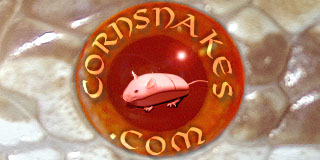I have never heard of any genetic, corn snake, "star gazer" type defect, except the one that arose from the sunkissed line. Of course, it has been around long enough that it has been bred into many unrelated lines. I am sure somebody has probably bred it into some creamsicles by now. But I have never personally seen or heard of a creamsicle that exhibited it. I would be interested to read the studies myself. Maybe a particular client or two has a line descended from sunkissed animals, and that is why a particular vet is seeing it? I don't think it is in creamsicle lines generally, or it would have reported more widely. Or it is something entirely new that this vet has discovered? Can't think of any other explanations, but would be interested to hear about it.
Also, since I have never heard of any other genetic star gazing corns (besides sunkissed lines), inbreeding probably doesn't have anything to do with it, UNLESS it has descended from sunkissed, and was inbred sufficiently to bring out the trait (just like any other recessive morph trait was produced).
I watched the video and it does not appear to me to be the same trait as the sunkissed I have seen. They usually show much more evidence of neck twisting, dipping, and moving upside down. Of course, I suppose some could manifest in a different way than I have seen. But the several dozen or more that I have observed all moved in very similar ways, and didn't look the same as the video.
My guess (and it is only a guess, based on past observations) is that it is probably not genetic, but incubation related, caused by either temp or moisture problems, or some environmental toxin present at the "wrong" time during development.
If you breed the same pair again, try to incubate them in the same time, place, and conditions as another couple of clutches. If you get the same defect with this pair, but not the others that are incubated with them, then that would show evidence of a genetic defect. And it might be a new one, although you would have to breed it to the sunkissed 'gazers to find out. Since it is not a desirable trait, you probably wouldn't want to go through all of that work to find the answer, unless you are just really curious.

